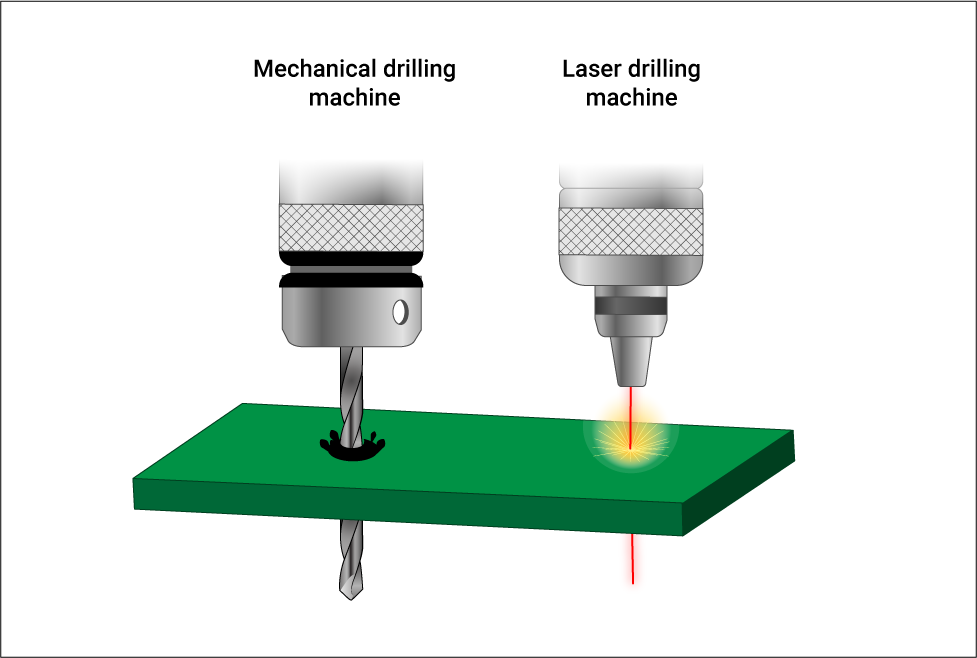The PCB Drill Tech
Basically, there are two kinds of drilling technologies, mechanical and laser drilling.

Mechanical drilling
The mechanical drills have less precision but are easy to execute. This drilling technology implements drill bits. The smallest hole diameter that can be drilled by these drills is about 6 mils (0.006”).
MECHANICAL DRILL LIMITATIONS
The mechanical drills can be used for 800 hits when used on softer materials like FR4. For denser materials like Rogers, the lifespan is reduced to 200 counts. If a PCB manufacturer ignores this then it will result in faulty holes which will turn the board to scrap.
Laser drilling
The laser drills, on the other hand, can drill way smaller holes. Laser drilling is a non-contact process where the workpiece and the tool do not come in contact with each other. A laser beam is used to remove board material and create precise holes. Here, the drill depth can be effortlessly controlled.
The laser technology is used to drill controlled depth vias with ease. Here, a minimum hole diameter of 2 mils (0.002”) can be drilled with precision.
LASER DRILLING LIMITATIONS
A circuit board is made up of copper, glass fiber, and resin. These PCB materials have different optical properties. This makes it hard for the laser beam to burn through a board efficiently.
The cost of the process also is comparatively high in the case of laser drilling.
